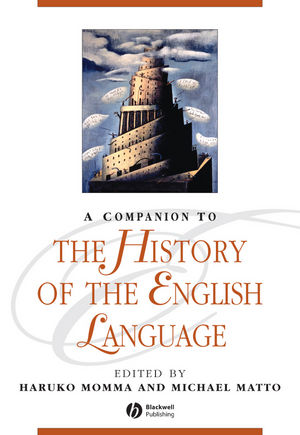A Companion to the History of the English LanguageISBN: 978-1-4051-2992-3
Hardcover
728 pages
August 2008, Wiley-Blackwell
 Other Available Formats: Paperback
|
||||||
“In conclusion, this book succeeds in doing what it intended, to provide linguistic grounding for readers primarily interested in the literature and culture of English past and present. It deserves a place in libraries and classrooms, to be read cover to cover or dipped into for specific topics . . . Because it is readable and has good chapter bibliographies and a detailed index, it might also serve as a reference for students researching a topic within the history of English.” (Linguist, 20 January 2013)
"Readers will find clear guides to basic information.... Editorial introductions to the various sections clarify and summarise the material. Each chapter ends with extensive lists of references and further reading. A glossary of linguistic terms, reflecting 'the terms as used by the authors,' is included. As with all the Blackwell Companions, the presentation of this substantial volume is of the highest standard." (Reference Reviews, November 2009)"Anyone with even a passing interest in the history of the language, whether an old-fashioned description of Middle English morphology or an au courant discussion of global Englishes, will be glad to have [this] Companion on the shelf." (Times Literary Supplement, May 2009)
Momma (New York Univ.) and Matto (Adelphi Univ.) draw on an international cast of scholars to present 59 essays on the history of the English language. Part of the "Blackwell Companions to Literature and Culture" series, this substantial volume is organized in nine sections and certainly covers the field. The first three sections provide essential linguistic concepts and a survey of the history of words, sounds, and grammar. Sections 4-6 deal with the Indo-European and Germanic roots of English, the history of English in England and the US, and English in British colonies and the postcolonial world. The last three sections cover literary language (including Shakespeare, Jane Austen, and Toni Morrison), language variation and language teaching, and approaches to language study such as stylistics and cognitive linguistics. The editors provide brief contextual commentary for each section, and each essay has its own bibliography to facilitate further reading. All the contributions are readable and concise. This comprehensive picture of English and its history is a must for scholars. Summing Up: Highly recommended. Graduate students, researchers, faculty. -- E. L. Battistella, Southern Oregon University (Choice, February, 2009)



